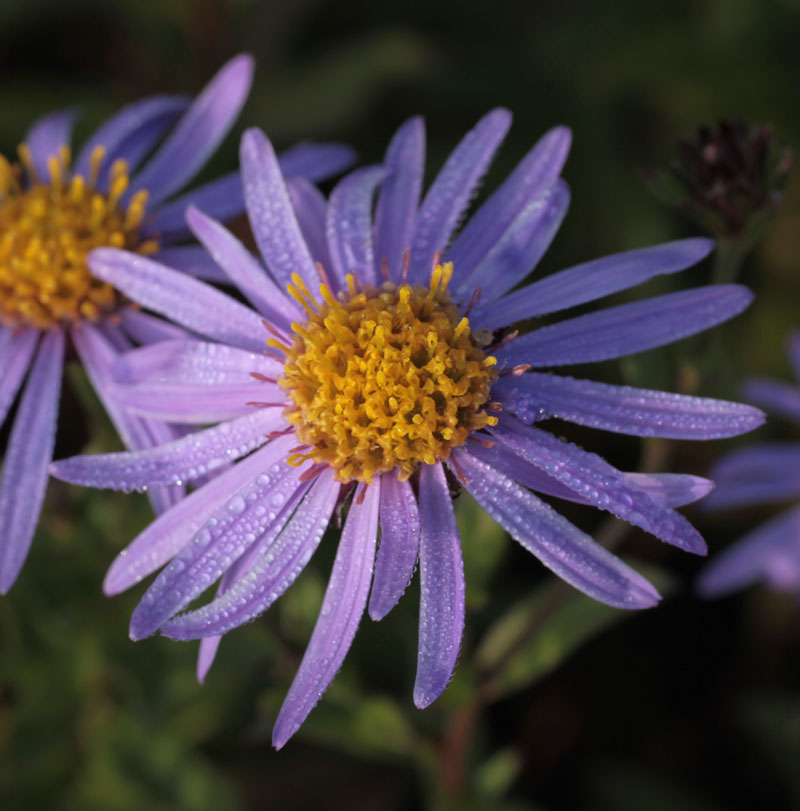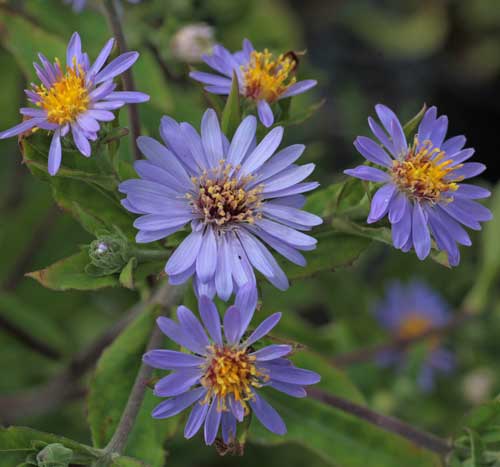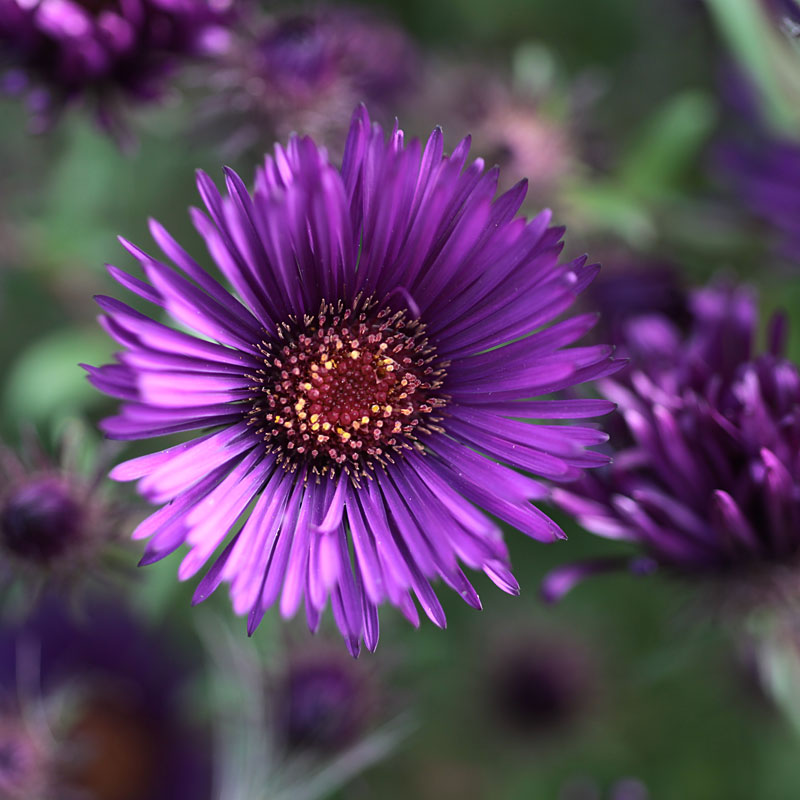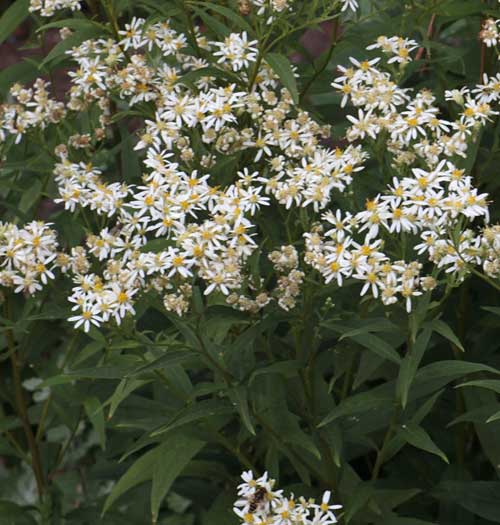New names for some Asters
21 March 2016 | Admin
Name change for Asters
Over the last few years there has been a re-classification of the genus Aster.
This means lots of new names for old plants - so when, as a nursery, should we adopt the changes? We have waited a few years to see what the gardening world will do, and have decided to start using the new names from March 2016.
Aster species from Europe and Asia remain as Aster, e.g. Aster amellus. Aster species and hybrids from North America (including those known as Michaelmas daisies) will now be split into a number of new genera.
The table below summarises the changes affecting plants that we grow.
New names for former Aster species and hybrids
| x amethystinus | Symphyotrichum x amethystinum |
| cordifolius | Symphyotrichum cordifolium |
| divaricatus | Eurybia divaricata |
| ericoides | Symphyotrichum ericoides |
| foliaceus | Symphyotrichum foliaceum |
| x herveyi | Eurybia x herveyi |
| laevis | Symphyotrichum lavae |
| linosyris | Galatella linosyris |
| macrophyllus | Eurybia macrophylla |
| novae-angliae | Symphyotrichum novae-angliae |
| novi-belgii | Symphyotrichum novi-belgii |
| radula | Eurybia radula |
| schreberi | Eurybia schreberi |
| sedifolius | Galatella sedifolia |
| turbinellus | Symphyotrichum turbinellum |
| umbellatus | Doellingeria umbellata |
There will now be four main groups of 'Aster' that we grow; Aster, Eurybia, Symphyotrichum and 'other' (to include Galatella and Doellingeria).
Aster
Those species that remain as Aster include the popular Aster amellus and it's hybrid Aster x frikartii, as well as other less well known species. Many of the remaining Aster flower in spring and summer rather than autumn and most are European or Asian.

Aster amellus 'Rudolf Goethe' - still an Aster!
Eurybia
This new genus of 23 species includes some of the more popular species Aster (very few hybrids and cultivars) that flower in the summer and tend to be more tolerant of some shade. The plants are mostly relatively short, to c. 60cm on average, and are shortly creeping to make slowly spreading patches rather than tight clumps. The most commonly grown are former Aster divaricatus, A. macrophyllus and A. schreberi.

Eurybia x herveyi
Symphyotrichum
This is the largest of the new genera and contains all those that used to be called Michaelmas daisies as well as a number of other autumn flowering species and hybrids. Unfortunately you can see that they have been saddled with a rather cumbersome name that will require bigger labels in many cases! Generally speaking if you grow what has been an Aster and can’t find it under Aster in a newer book (especially the RHS Plantfinder) try Symphyotrichum first.

Symphyotrichum novae-angliae 'Rougham Violet'
The Rest
There are a handful of other, smaller, new genera that are housing some less well known species. Only two are relevant to us at the moment; Doellingeria and Galatella. Doellingeria is the new home for what was Aster umbellatus, and Galatella encompasses some wand like, patch forming species such as Aster linosyris and Aster sedifolius.

Doellingeria umbellata
In the majority of cases there are no changes to the actual species name, just the genus. In the few species name changes that we have found so far the change is limited to the gender to match the new genus, eg. Aster macrophyllus becomes Eurybia macrophylla.
Using the new names
We will continue to list all former Aster in the Aster category on our website so that they are all found together. New plant labels will have the old Aster name included on the label, where space permits.
Other than fitting new long names like Symphyotrichum novae-angliae ‘Rougham Violet’ onto labels, the biggest problem with this new set of names is likely to be sorting out exactly where some of the hybrids fit in. Well known, popular, Asters like ‘Little Carlow’ have mostly moved to Symphyotrichum. However, at the moment it is not easy to find hybrids in the RHS Plantfinder 2015. Hopefully this will be addressed in the 2016 edition.
Find our Aster range for sale here.




